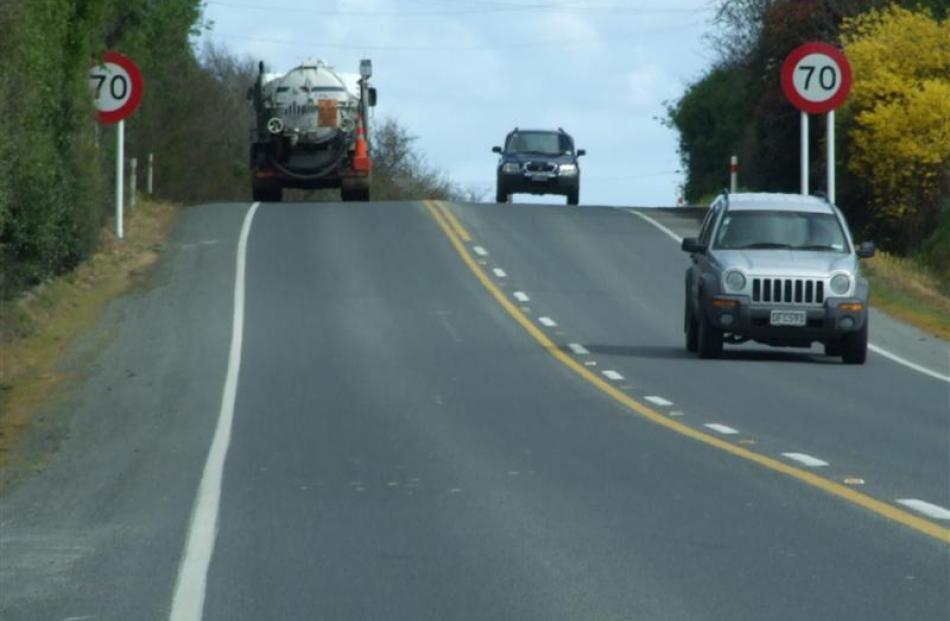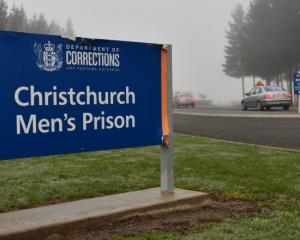
The report by the 59-nation International Transport Forum (ITF) recommends a 70kmh speed limit on all rural roads, including state highways, without a median barrier.
It also proposes reducing speed limits to 30kmh in urban areas where cars share space with cyclists and other "vulnerable road users", or 50kmh in other urban areas.
But NZ Automobile Association spokesman Dylan Thomsen said 87 percent of AA members in 20 surveys over the past five years opposed reducing the open-road speed limit to 90kmh.
When asked about the 70kmh proposal, Prime Minister Jacinda Ardern said the Government's new policy statement on transport would be released soon and road-safety measures would be part of that.
"I think there are a number of initiatives we should be looking at to increase the safety of our roads and we have evidence to tell us the kinds of things we need to be investing in. It just takes us prioritising it. We'll have more to say on that as part of the Government policy statement on transport which you can expect very soon."
That draft 10-year plan is expected later today and is also expected to indicate Labour's plans for the road builds National had proposed.
National Party leader Simon Bridges said calls for a 70kmh limit on roads without median barriers were simplistic and it was better to invest in safety measures and better roads.
As Transport Minister, Bridges allowed a 110kmh speed limit on some of the Roads of National Significance, such as the Waikato Expressway, and said there had never been a driving death on those roads.
He said improving road quality made them safer and it was "sad" to see the Roads of National Significance programme effectively halted by the new Government.
"No one ever died on a RONS and I would have liked to see that investment continue because I think it would have massive benefits for safety."
He said the Kapiti Coast had gone from "dozens and dozens" of crashes, some serious, to no deaths or serious injuries once the expressway and median barriers were put in.
"That sort of investment in infrastructure makes a really big difference."
The ITF report says every 1 percent increase in average speed increases road deaths by 4 percent.
"Thus reducing speed by a few kmh can greatly reduce the risk and severity of crashes," it said.
"Lower driving speeds also benefit quality of life, especially in urban areas as the reduction of speed mitigates air pollution, greenhouse gas emissions, fuel consumption and noise."
The report is based on analysing the effects of changes in speed limits or introducing automated speed enforcement in 10 countries since 1993.
For example, Sweden cut deaths by 41 percent on rural two-lane roads with inadequate road shoulders by reducing the speed limit from 90 to 80kmh in 2008.
At the same time it raised the speed limit on some motorways with high safety standards from 110 to 120kmh, with no significant change in road deaths.
New South Wales cut road deaths in urban areas by 45 percent by lowering the urban speed limit from 60 to 50kmh in the late 1990s.
Italy cut crashes on the A56 urban motorway network by 32 percent by installing 320 cameras along the 2900km network, allowing police to calculate cars' average speeds between the cameras.
"Speed limits should be set based on the Safe System principles and taking into account the function and use of the roads," the report concludes.
The aim of a Safe System is to offer a road system that can accommodate the unavoidable human error without leading to death or serious injury. This means that the forces a human body can tolerate and still survive must be considered when designing the road system and setting the speed limits.
"Such physical limitations are, for example, that most unprotected road users survive if hit by a vehicle at up to 30kmh, a modern car can protect occupants up to 50kmh in a side collision and a safe car can protect occupants up to 70kmh in a head-on collision.
"In urban areas, where there is a mix of motorised and non-motorised road users sharing the same space, speed limits above 50kmh are not acceptable. In areas with a high density of vulnerable road users, a limit of 30kmh is to be preferred."
But in New Zealand, Thomsen said speed limits were set by an agreed speed-management guide requiring councils to identify the top 5 percent and 10 percent of roads in their districts with the highest crash risks, or with the biggest discrepancy between the current speed limit and actual average traffic speeds.
For example, the Waikato District Council reduced speed limits on many rural roads yesterday.
Rotorua Lakes Council is proposing new speed limits on several local roads including Hamurana Rd along the northern edge of Lake Rotorua.
"They [councils] have the capability now to look at setting those speed limits, but there are guidelines and regulations they have to comply with," Thomsen said.
But he said 87 percent of AA members in recent surveys opposed a blanket reduction in the open-road speed limit to 90kmh, and 80 percent opposed lowering the speed limit in urban areas to 40kmh.
Clive Matthew-Wilson of the car review website dogandlemon.com said the proposed blanket 70 kmh limit on rural roads was "ridiculous and unworkable".
"Imposing a 70 kmh slow speed limit on long, straight roads would be met with open rebellion," he said.
"New Zealand's rural roads are often narrow, winding and poorly designed. On the most dangerous roads, where there are no safety measures in place, it makes sense to reduce the speed limit to 80kmh."












